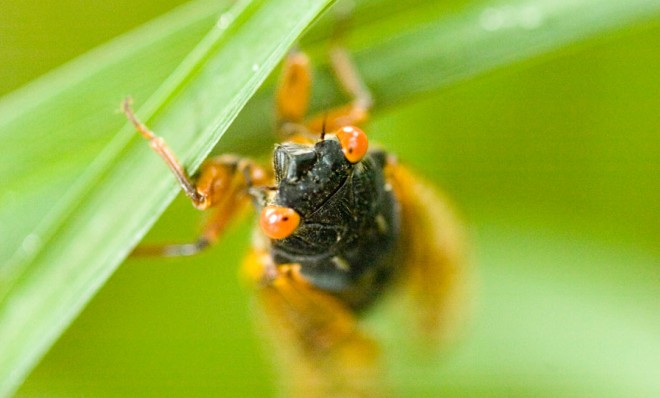Where is that cicada invasion, anyway?
The 17-year brood II apex is supposed to be upon us. And yet...

If you live in the eastern United States, chances are you've already read the terrifying cicada headlines. Brood II cicadas, which emerge from the ground every 17 or so years, are set to swarm through American air, creating vast, buzzing clouds that will inevitably lead to crunchy little carcasses blanketing our lawns and driveways. By late May or June, hundreds of millions of these fearsome-looking creatures are supposed to be "boiling out of the ground," in the memorable words of the New York Times, as if "from some horror movie."
So where are they?
Short answer: They're waiting for warmer weather.
The Week
Escape your echo chamber. Get the facts behind the news, plus analysis from multiple perspectives.

Sign up for The Week's Free Newsletters
From our morning news briefing to a weekly Good News Newsletter, get the best of The Week delivered directly to your inbox.
From our morning news briefing to a weekly Good News Newsletter, get the best of The Week delivered directly to your inbox.
The Atlantic Cities points out that it's been "unusually cold" along the eastern seaboard for this time of the year. And cicadas will only emerge when temperatures start heating up.
(Related: 5 things you should know about the cicada invasion)
"The strange weather may have had a detrimental effect on the brood," Gary Hevel, a research collaborator with the Smithsonian Institution's entomology department, tells The Atlantic Cities. "I would expect that stronger numbers will occur in the following weeks as weather temperatures rise."
When temperatures start consistently hovering above 64 degrees Fahrenheit, the cicadas will embark on their six-week life cycle, which ends with their eggs being buried underground for another 17 years.
A free daily email with the biggest news stories of the day – and the best features from TheWeek.com
WNYC's RadioLab has put together a crowd-sourced cicada tracker to keep tabs on the brood. As you can see, large numbers of adult cicadas have already been spotted in Virginia and eastern New Jersey.
People who live in the suburbs or close to parks — anywhere the earth is soft and lush, basically — are more likely to encounter the bugs in vast numbers. Urbanites in Manhattan are less likely to see many of the brood II insects because of all that unfriendly concrete.
And if you don't live along the east coast, there is still a way to get your cicada fix. YouTube is teeming with videos of the fiendish little nymphs emerging from the ground:
After climbing their way out of the dirt, juveniles latch onto tree branches, where they shed their exoskeletons and emerge as winged adults. Males then spend their remaining weeks making loud screeching noises in hopes of attracting females to mate with. It sounds something like this:
In large enough numbers, a noisy chorus of male cicadas can be as loud as 90 decibels. Better still: All that horny screeching is going to persist most of summer. "It'll be as loud as a rock concert," University of Maryland entomologist Michael Raupp tells NBC News, "but hey, these are teenagers. They've been underground for 17 years. They're going to get in trees, they're going to sing."
-
 5 criminally underrated cartoons about Pete Hegseth’s war crime
5 criminally underrated cartoons about Pete Hegseth’s war crimeCartoon Artists take on USS Hegseth, rats leaving the sinking ship, and more
-
 Can Mike Johnson keep his job?
Can Mike Johnson keep his job?Today's Big Question GOP women come after the House leader
-
 A postapocalyptic trip to Sin City, a peek inside Taylor Swift’s “Eras” tour, and an explicit hockey romance in December TV
A postapocalyptic trip to Sin City, a peek inside Taylor Swift’s “Eras” tour, and an explicit hockey romance in December TVthe week recommends This month’s new television releases include ‘Fallout,’ ‘Taylor Swift: The End Of An Era’ and ‘Heated Rivalry’
